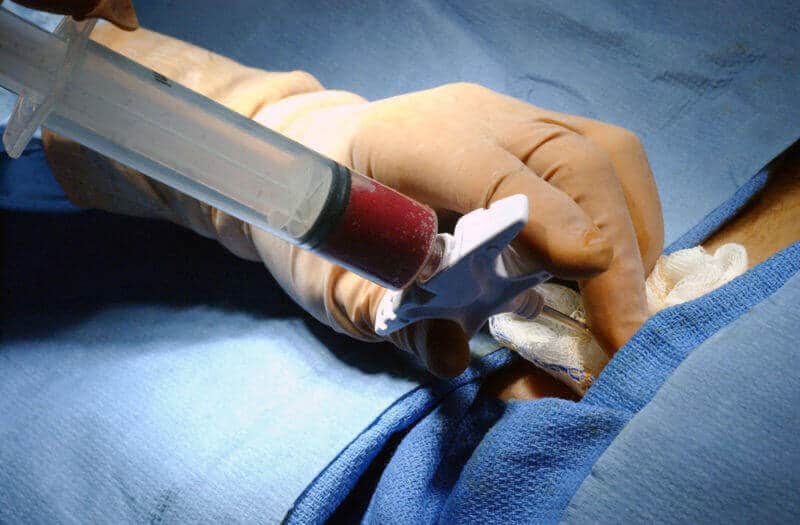Bone marrow transplantation is a life-saving therapy for many patients with blood cancers like leukemias and lymphomas. Currently, the gold standard blood-generating stem cells are obtained from a donor, a sibling, with a perfect match to the patient in order to minimize the chance of rejection and other complications. However, not all patients will have a perfectly matched sibling. Some cancer centers have begun to explore whether half-matched donors might work just as well.
In the first apples-to-apples comparison, researchers have shown that half-matched donor recipients do just as well as full-match recipients, which could be a major advance for minorities, and others without good access to full-match donors. The study was published in the journal Biology of Blood and Marrow Transplantation.
“This is the first study to compare the gold standard to a half-match using an identical protocol,” says Neal Flomenberg, M.D., Chair of the Department of Medical Oncology atThomas Jefferson University and a senior author on the study. “The field has debated whether the differences in outcomes between full and partial matches were caused by the quality of the match or by all the procedures the patient goes through before and after the donor cells are administered. We haven’t had a clear answer,” he adds.
In this study, the researchers compared 3-year outcomes data from half-match donor recipients who had been transplanted using the Jefferson Two-Step protocol with full-matched donors receiving the same Two-Step approach. Three years after transplant approximately 70 percent of the patients in both groups were still alive and cancer free.
If it’s as good, but not better, what’s the advantage of a half-match? First, not everyone will have a full match in their family. In fact, according to the National Marrow Donor Program, only 30 percent of patients will have a family member whose cells are a full match. Unrelated donor registries, or cord blood registries, can be an alternate source, but the process can be expensive and time consuming for patients who may only have a short window in which to be treated (bone marrow transplants are most successful while a patient is in remission). Half-match donors are much easier to find among a patient’s relatives, and can be ready to donate within days. Registries also tend to lack matches for minorities.
Although there are several methods for performing a half-match, also known as a haploidentical transplant, the jury is still out about the most effective approach. “There are some major advantages to the two step approach,” says first author Sameh Gaballa, M.D., Assistant Professor in the Department of Medical Oncology at Thomas Jefferson University and a researcher at the Sidney Kimmel Cancer Center at Thomas Jefferson University. First, rather than extracting stem cells from the bone marrow, which can be painful and risky for donors who can sometimes require blood transfusions, the Two-Step method uses stem cells harvested from the blood. Using the blood as a source of stem cells is not only easier for the donor, but it gives physicians the ability to control the exact number of immune cells, called T cells, which fight the cancer, and donor stem cells that replenish the patient’s depleted blood supply (the two donor components of the therapy). “Making sure we have just the right amount of T cells makes a difference. Too few and you might not control the cancer, resulting in a relapse or rejection of the transplant. Too many and you run the risk of severe graft-versus host disease, which can endanger the patient,” says Dr. Gaballa.
Rather than administer both the T cells and the stem cells at once, the Two-Step method staggers them, so that the patients first receive the cancer-fighting T cells, followed by the drug cyclophosphamide, that helps keep those cell from becoming over reactive. The stem cells that replenish the patient’s immune system are given next. In preliminary results presented at the American Society of Bone and Marrow Transplantation meeting in 2014, the Two-Step protocol resulted in engraftment of donor cells 3-4 days earlier than with a one-step procedure. “That could translate to shorter hospital stays for patients, less time that the patient is without an immune system, and less risk of infection,” says Dolores Grosso, D.N.P., Assistant Professor in the Department of Medical Oncology at Jefferson and last author on the study.
“The results of the current study are certainly encouraging, and suggest that outcomes from a half-matched related donor are similar to fully matched donors. It might be time to reassess whether half-matched related transplants can be considered the best alternative donor source for patients lacking a fully matched family member donor,” says Dr. Gaballa. “For that, we’ll need more evidence from a randomly controlled prospective trial, rather than studies that look at patient data retrospectively, to help solidify our findings here.”

